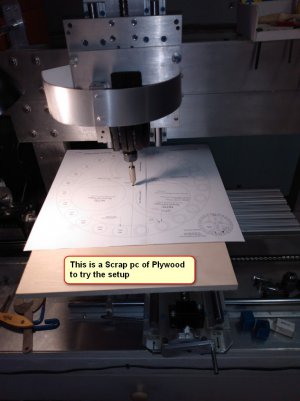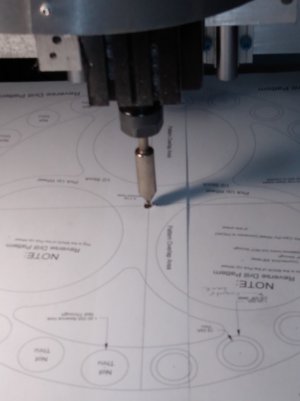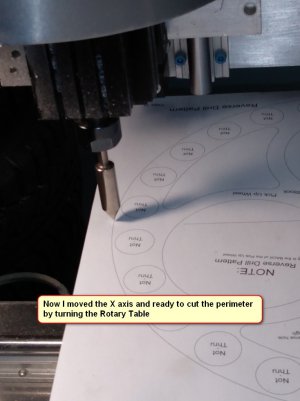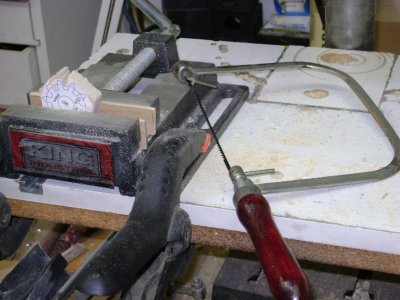- Joined
- Nov 24, 2013
- Messages
- 254
Almost zero experience with a mill but I thought perhaps it will be easier to do this cut on the mill than using my router. Besides, if this cut is successful then I can do the required reaming cuts on the inside of this wheel which has a few more smaller circles.
I’m making a wooden clock as a hobby and the wheel shown here is a 12.5” OD wheel which I will cut on a Baltic Birch plywood. I will be using a 1/8” 2 flute bit and will cut the 1/2” ply in 3-4 steps. The ply is secured on my 4” Rotary Table with double sided tape in 4 places and I hope it will stay there.
My question is which way do I turn the Rotary Table, CW or CCW?
Thanks
I’m making a wooden clock as a hobby and the wheel shown here is a 12.5” OD wheel which I will cut on a Baltic Birch plywood. I will be using a 1/8” 2 flute bit and will cut the 1/2” ply in 3-4 steps. The ply is secured on my 4” Rotary Table with double sided tape in 4 places and I hope it will stay there.
My question is which way do I turn the Rotary Table, CW or CCW?
Thanks





